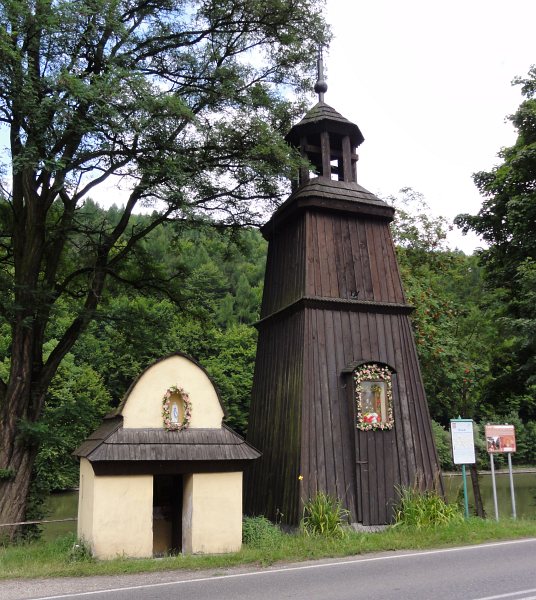
Neunkirchen-Seelscheid (Germany)

Neunkirchen-Seelscheid is a picturesque municipality in North Rhine-Westphalia, Germany, situated in the southernmost part of the Bergisches Land region. It lies approximately 20 km northeast of Bonn and 35 km southeast of Cologne, offering a peaceful rural setting with convenient access to major urban centres.
(Photo of St Margarita courtesy of Hewiha from Wikipedia)
The municipality consists of the two main towns, Neunkirchen and Seelscheid, along with several smaller villages that contribute to its charming, community-oriented atmosphere. The landscape is defined by rolling hills, dense forests, and scenic river valleys. The northwestern boundary is marked by the Naafbach River, while the southeastern boundary follows the Bröl River. The Wahnbach River, running through the municipality’s centre, feeds into the Wahnbach Lake, an important reservoir supplying drinking water to the region.
Neunkirchen-Seelscheid covers an area of approximately 50.5 square kilometres (19.5 square miles) and sits at an average elevation of 220 metres above sea level. It has a population of just over 20,000 residents, who enjoy a high quality of life in this tranquil yet well-connected area. The region is known for its hiking and cycling trails, historical churches, and traditional half-timbered houses, reflecting its rich heritage.
With a mix of agricultural land, small businesses, and local industries, Neunkirchen-Seelscheid maintains a strong sense of community while benefiting from its proximity to the economic hubs of Cologne and Bonn. Its balance of nature, history, and modern infrastructure makes it an attractive place for both residents and visitors alike.
Essarts-en-Bocage (France)
Essarts-en-Bocage, established in 2016 through the merger of several municipalities from the former Canton des Essarts, with which Bicester was previously twinned, is a charming commune in the Vendée department of the Pays de la Loire region. Ideally situated between the cities of Nantes and La Rochelle, it occupies a strategic location near the French Atlantic coast. The Vendée Globe is a famous solo, non-stop round-the-world yacht race that takes place every four years.
(Photo of Château des Essarts courtesy of Spouik from Wikipedia)

The Essarts-en-Bocage commune is composed of four historic towns – Les Essarts, L’Oie, Sainte-Florence, and Boulogne – bringing together a total population of approximately 17,000 residents. Known for its picturesque landscapes, rich heritage, and dynamic community life, it blends rural charm with modern amenities.
Its proximity to the Atlantic Ocean, just about an hour’s drive away, makes it an attractive destination for nature lovers and tourists. The region is renowned for its scenic countryside, cycling routes, and historical sites, including the Château des Essarts, which reflects the area’s medieval history. Additionally, the commune enjoys a thriving local economy, supported by agriculture, artisanal businesses, and growing industrial sectors. The world renowned Puy-du-Fou historical theme park is just half an hour’s drive away.
Whether for its history, outdoor activities, or convenient location, Essarts-en-Bocage offers a high quality of life in the heart of the Vendée.
Czernichów (Poland)

The municipality of Czernichów is a scenic rural area in southern Poland, nestled within the Beskid Mountains near the border triangle with the Czech Republic and Slovakia. Located approximately 50 kilometres south of Katowice and 70 kilometres southwest of Kraków, it offers a picturesque landscape shaped by its mountainous surroundings and river valleys.
(Photo of shrine and wooden belfry courtesy of DTG from Wikipedia)
Czernichów consists of four villages: Czernichów, Międzybrodzie Bialskie, Międzybrodzie Żywieckie, and Tresna. Together, these communities have a population of around 7,000, making it a peaceful and close-knit region. The area is known for its traditional wooden architecture, rich cultural heritage, and strong ties to Polish highland traditions.
The landscape is dominated by the surrounding mountains, which reach elevations of up to 1,000 metres. The Sola River runs through the municipality from north to south, playing a vital role in the local ecosystem. In the heart of the region, the river expands into Lake Międzybrodzkie, a man-made reservoir that serves as a crucial hydroelectric power source. The lake, along with nearby Lake Żywieckie, provides opportunities for water sports, fishing, and recreation, attracting visitors year-round.
Czernichów is also a popular destination for outdoor enthusiasts, with well-marked hiking and cycling trails offering breathtaking views of the Beskid peaks. In the winter months, the area’s slopes become a hub for skiing and snowboarding. The municipality’s blend of natural beauty, outdoor activities, and traditional culture makes it a charming and attractive location for both residents and visitors.
